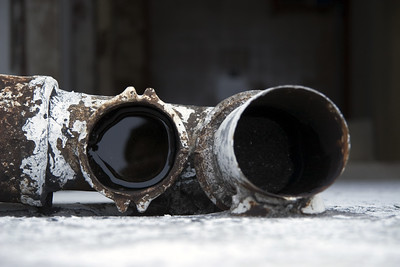I’ve written multiple times about the need for an Asset Protection Policy at Washtenaw Community College. As long as the current Board of Trustees is in place, Washtenaw County taxpayers won’t get one, but that doesn’t change the need for it. On Wednesday, WCC’s aging sewer infrastructure spilled thousands of gallons of raw sewage into the retention ponds on campus.
The spill closed the campus on Thursday while the college made repairs. The severity of the spill was such that it required a report to the State of Michigan’s Department of Environment, Great Lakes and Energy (EGLE) and the Washtenaw County Health Department.
Up for some debate was the actual size of the problem. In its public report, WCC officials claimed that the spill involved 3,000 – 4,000 gallons of untreated wastewater. However, in the College’s report to the state, it characterized the spill size as 10,000 gallons. Both estimates are probably best viewed as “preliminary,” but regardless of the amount, it was enough crap to close the campus for a day. (How much did that cost?)
Some people find it hard to imagine the size of the spill, so I’ll offer these comparisons. Three thousand gallons of liquid would fill a cube-shaped container that measures about 7.5′ x 7.5′ x 7.5′. Four thousand gallons of liquid would fill a cube that’s more like 8′ all the way around. Ten thousand gallons of liquid would fill a 14 x 12 x 8 bedroom. (Or about two-thirds of a 75-foot lap pool.)
Washtenaw County taxpayers must demand Asset Protection
The size of the spill is somewhat less important that its cause. In the most recent Capital Outlay Plan (2024-2028), WCC identifies significant plumbing problems in both the SC Building and the Great Lakes Building. This is from the write-up on the Student Center Building:
“Galvanized plumbing 4″ and smaller has leaking at joints. Lines 2″ and smaller are mostly copper, with no identified issues. Sanitary lines are deteriorating. Fixtures, drip. Fixtures scheduled and funded for replacement on first floor. Sanitary sewer and storm sewers, and drainage system in basement need to be repaired or replaced.”
Just for funsies, I pulled up a copy of the 2015-2019 WCC Capital Outlay Plan (which was written in 2013), and it said this about the condition of the plumbing in the Student Center Building:
“Galvanized plumbing 4″ and smaller has leaking at joints. Lines 2″ and smaller are mostly copper, with no identified issues. Sanitary lines are deteriorating. Fixtures, drip. Fixtures scheduled and funded for replacement on first floor. Sanitary sewer and storm sewers, and drainage system in basement need to be repaired or replaced.”
To be clear, WCC did not indicate where the problem originated, so it’s not fair to assume that any particular building was the source of the problem. My point here is that the Student Center Building is one of the most heavily used buildings on campus, and this is the condition it is currently in. That’s the same condition the building was in 10 years ago. This administration has done nothing to address some very fundamental health-and-safety issues that the building has had for at least the last decade.
Nothing.
Ignoring plumbing problems does not make them go away
This is not the condition that the SC Building (or any building that the public has contact with) should be in.This is an egregious breach of the public trust. Especially when the Washtenaw County taxpayers send more than $60M annually to WCC. In that time, WCC could not find the money to repair the plumbing in the SC Building basement, but it somehow had the cash on hand to remodel the Executive Suites on the second floor.
This.
This is why the Washtenaw County taxpayers need an Asset Protection Policy in place at WCC. It doesn’t really matter how comfortable the President’s Office is when the campus cannot operate because the toilets are spreading raw sewage all over the place.
Photo Credit: Pulpolux, via Flickr
































